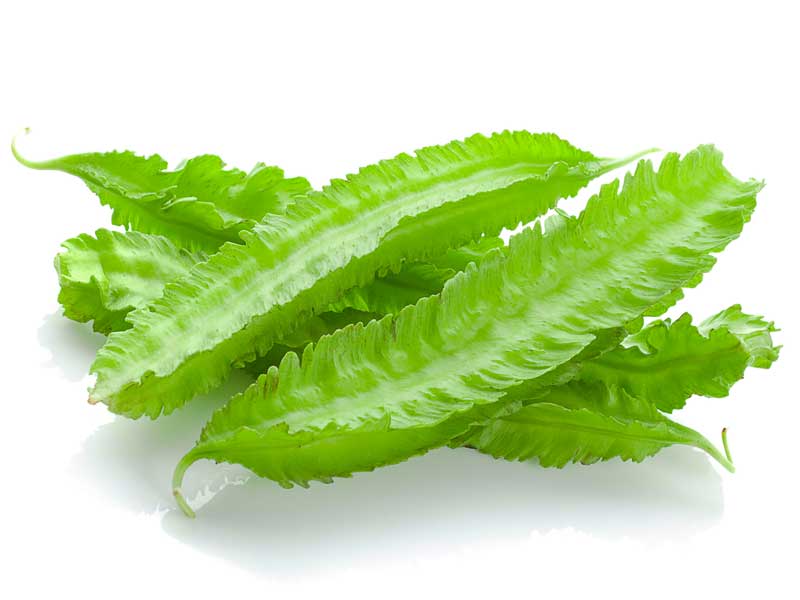
Winged beans are an edible and sustainable crop that’s simple to grow. They thrive in hot, humid weather and need little maintenance. Every part of the plant is edible, including the leaves, pods, and tubers, which helps reduce food waste. These beans are excellent in stir-fries, salads, and many Asian recipes. They also improve soil health by adding nitrogen naturally. In this guide, you’ll discover why winged beans are a smart choice for your garden.
What Are Winged Beans?

Botanical name: Psophocarpus tetragonolobus
Family: Fabaceae
Also known as: Four-angled bean, Manila bean, princess bean, dragon bean, and goa bean
Winged beans are a perennial climbing vine native to Southeast Asia. Their pods have four ridged edges, giving them a unique look. These plants produce many edible parts, including the leaves, flowers, seeds, pods, and tubers. They grow best in warm, tropical climates and can also be grown in containers if space is limited. To grow well, they need something to climb, such as a trellis or stakes.
Main features:
- High in protein
- Edible from root to tip
- Helps enrich soil naturally
Nutritional Value
Winged beans are rich in protein, vitamins A and C, calcium, iron, potassium, and magnesium. The dietary fiber supports digestion and overall health.
Key nutrients:
- Vitamin A: Good for eyes and skin
- Vitamin C: Supports the immune system
- Calcium: Strengthens bones
- Iron: Helps transport oxygen in the blood
Health Benefits
Winged beans support digestion, heart health, and muscle growth. The crop’s antioxidants help protect your cells from damage.
Health highlights:
- Improves digestion: High in fibre
- Supports heart health: Helps manage cholesterol and blood pressure
- Builds muscle: Excellent plant protein source
Growing Winged Beans at Home

Winged beans are frost-tender perennials that grow well in home gardens, especially in tropical and subtropical climates. Plants can reach 3 metres tall with green leaves, blue/violet flowers, and crisp, four-cornered pods.
When to plant:
- Tropical/Subtropical: Sow from late spring to early summer after danger of frost has passed.
- Soil temperature: Seeds germinate best at 20–30°C.
How to plant:
- Soak seeds overnight to improve germination.
- Plant 2–3 cm deep and space 20–30 cm apart.
- Choose a spot in full sun with well-drained, rich soil.
Watering:
- Keep soil consistently moist but not waterlogged, especially during flowering and pod development.
Support:
- Provide sturdy trellises, netting, or stakes for vines to climb.
Growing tips:
- Mulch: Use organic mulch to keep soil cool and suppress weeds.
- Pruning: Remove old or damaged leaves to encourage new growth.
- Fertilising: Often unnecessary due to nitrogen fixation, but compost can improve yields.
Pests and diseases:
- Generally pest-resistant, but watch for aphids and caterpillars.
- Ensure good airflow to prevent fungal issues.
Harvesting:
- Pick pods when they are young and tender (10–20 cm long) for the best taste.
- Harvest regularly to encourage continuous production.
- Tubers can be dug up after the growing season for additional yield.
Sustainable Gardening
Winged beans naturally fix nitrogen, improving soil fertility without synthetic fertilisers. Since the entire plant is edible, there is very little waste.
Why they’re sustainable:
- Nitrogen-fixing: Naturally improves soil
- Climate adaptable: Grows in various conditions
- Low waste: Entire plant is edible
Cooking and Eating Winged Beans

Winged beans are easy to prepare. Wash and trim them before cooking.
Cooking methods:
- Steaming: Preserves nutrients and flavour
- Stir-frying: Adds a crisp texture
- Salads: Slice raw for a fresh crunch
- Curries and soups: Soak up spices and broth
Recipes to Try
- Winged Bean Stir-Fry: Sauté with onion and capsicum
- Winged Bean Salad: Toss with tomatoes and cucumber
- Winged Bean Soup: A warm, comforting dish
- Winged Bean Omelette: Great for a protein-rich breakfast
Frequently Asked Questions
- What parts are edible? Every part of the plant can be eaten.
- Can they grow in pots? Yes, as long as they have support to climb.
- How should I store them? Keep pods in a cool, dry place and eat within a few days for best flavour.
Conclusion
Winged beans are a nutritious, sustainable, and easy-to-grow plant. Whether you’re growing them or adding them to your cooking, they’re a fantastic way to enjoy fresh, healthy food while caring for the environment. Shop now for untreated, non-GMO Winged Bean Seeds.
